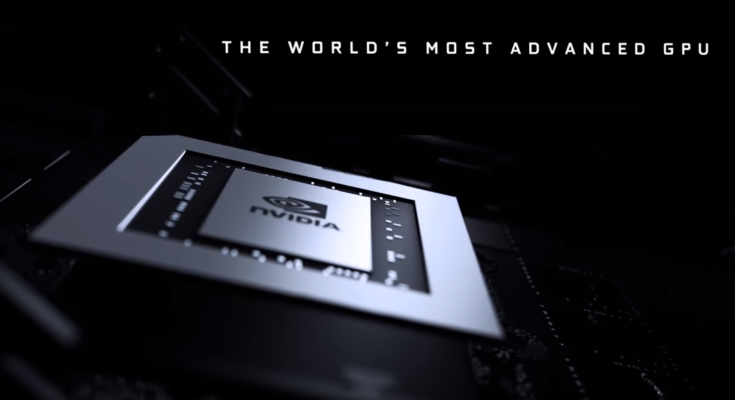NVIDIA Ada Lovelace GPUs-based GeForce RTX 40 series graphics cards will be one of the major launches for 2022. The new lineup is expected to bring more than 2x the performance increase over Ampere but will also be one of the most power-hungry lineups ever released.
NVIDIA Ada Lovelace Powered GeForce RTX 40 GPUs To Be Twice As Fast & Twice As Power Hungry Than Ampere
The rumor once again comes from Greymon55 who has been actively sharing details regarding AMD and NVIDIA next-gen GPU launches. In his new tweet, the leaker claims that Ada Lovelace, NVIDIA’s next architecture for its GeForce RTX graphics cards will feature double the performance but also double the power consumption.
Double performance, double power consumption, can you accept it?
— Greymon55 (@greymon55) November 5, 2021
Based on previous reports, this is looking to be the case as both AMD and NVIDIA next-gen GPUs are going to end up offering over 2x the performance increase but will also increase power input dramatically.
The NVIDIA Ada Lovelace GPUs will power the next-generation GeForce RTX 40 graphics cards that will go head-on with AMD’s RDNA 3 based Radeon RX 7000 series graphics cards. There’s still some speculation regarding the use of MCM by NVIDIA. The Hopper GPU, which is primarily aimed at the Datacenter & AI segment, is allegedly taping out soon and will feature an MCM architecture. NVIDIA won’t be using an MCM design on its Ada Lovelace GPUs so they will keep the traditional monolithic design. The Ada Lovelace GPUs are expected to utilize TSMC’s 5nm process node and will bring in a series of key innovations, architecturally.
Previously rumored specs have shown us a huge update to the core specs. The NVIDIA AD102 “ADA GPU” appears to have 18432 CUDA Cores based on the preliminary specs (which can change) provided by Kopite. This is almost twice the cores present in Ampere which was already a massive step up from Turing. A 2.2 GHz clock speed would give us 81 TFLOPs of compute performance (FP32). This is more than twice the performance of the existing RTX 3090 which packs 36 TFLOPs of FP32 compute power.
At the same time, these huge performance figures would come at the cost of higher overall power consumption. NVIDIA is already expected to ship its RTX 3090 Ti (reportedly the first PCIe Gen 5.0 graphics card) with a TGP of 450W. Ada Lovelace-based GeForce RTX 40 series is expected to end up with a TDP well over 500W and even around 600W. That’s why a new connector type that can support such high-power figures is being designed for the next generation of graphics cards.
Kopite7kimi also hinted at some specification details of the NVIDIA Ada Lovelace chips a while back which you can read more about here and check out the specs in the table provided below:
NVIDIA CUDA GPU (RUMORED) Preliminary:
| GPU | TU102 | GA102 | AD102 |
|---|---|---|---|
| Architecture | Turing | Ampere | Ada Lovelace |
| Process | TSMC 12nm NFF | Samsung 8nm | 5nm |
| Graphics Processing Clusters (GPC) | 6 | 7 | 12 |
| Texture Processing Clusters (TPC) | 36 | 42 | 72 |
| Streaming Multiprocessors (SM) | 72 | 84 | 144 |
| CUDA Cores | 4608 | 10752 | 18432 |
| Theoretical TFLOPs | 16.1 | 37.6 | ~80 TFLOPs? |
| Flagship SKU | RTX 2080 Ti | RTX 3090 | RTX 4090? |
| TGP | 250W | 350W | 450-600W? |
| Release | Sep. 2018 | Sept. 20 | 2022 (TBC) |
The NVIDIA Ada Lovelace GPU family is expected to bring a generational jump similar to Maxwell to Pascal. It is expected to launch late in Q4 2022 but based on GPU supply and availability, it’s likely to move back to 2023.





Hello there I am so happy I found your weblog, I really found you by accident, while I was browsing on Bing for something else, Regardless I am here now and would just like to say thanks for a tremendous post and a all round entertaining blog (I also love the theme/design), I don抰 have time to read through it all at the minute but I have book-marked it and also included your RSS feeds, so when I have time I will be back to read a lot more, Please do keep up the awesome job.
I have realized that in cameras, exceptional devices help to focus automatically. These sensors associated with some cams change in in the area of contrast, while others use a beam of infra-red (IR) light, particularly in low light. Higher spec cameras oftentimes use a blend of both methods and will often have Face Priority AF where the digicam can ‘See’ a face while focusing only in that. Thanks for sharing your ideas on this weblog.